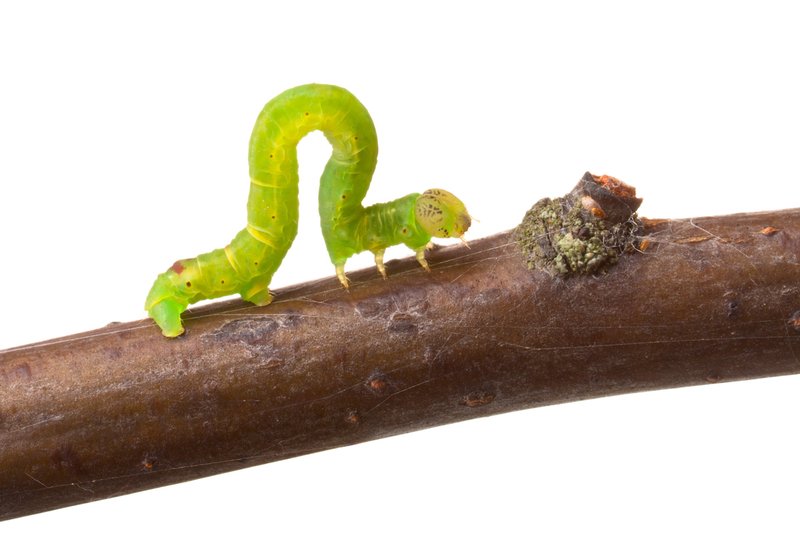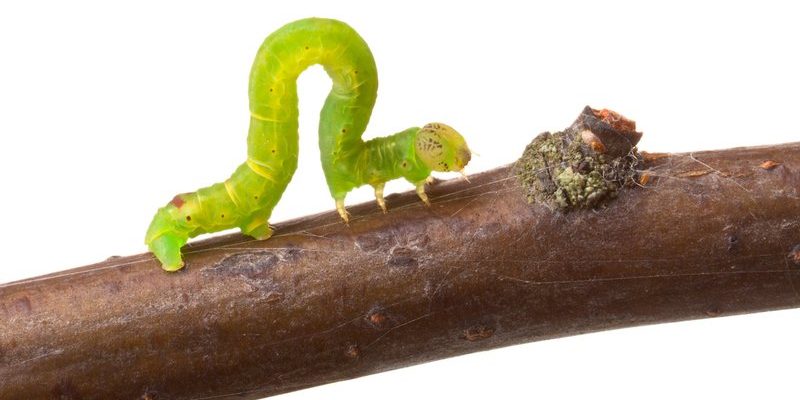
Inchworms, which are actually the larvae of moths, have a gentle way of moving that mimics the motion of measuring an inch, hence their name. As they inch along, munching on leaves, they contribute to the natural cycle of life, making urban forests more vibrant and rich. If you’ve been curious about how these little guys fit into your local ecosystem and how we can coexist with them, you’re in the right place. Let’s delve into this green world and discover some coexistence tips that might just help your urban garden thrive alongside these fascinating creatures.
What Are Inchworms?
Inchworms are the larvae of various moth species, with their most recognizable trait being their unique walking style. Instead of moving in a conventional way, they arch their bodies and then “suspend” themselves, creating that signature inching motion. There are several species spread across the globe, each with distinct appearances and habits. Most are harmless and simply eat leaves, which is vital for their growth.
You might be wondering why inchworms are important. Well, they serve as food for birds and other wildlife. Their presence in urban forests indicates a healthy ecosystem. If you notice inchworms in your garden, it’s often a sign that your plants are providing a suitable environment for wildlife. So, rather than viewing them as pests, think of them as part of your garden’s story!
The Role of Inchworms in Urban Ecosystems
In urban forests, inchworms play a surprising role in maintaining balance. They help control the growth of certain plants by munching on leaves. This grazing encourages plants to produce new growth, ultimately resulting in a more diverse ecosystem. The plants they dine on often respond by growing sturdier and healthier.
Moreover, inchworms are an essential food source for many birds, lizards, and other small mammals. When you have a few inchworms around, you’re not just helping the plants; you’re also aiding local wildlife. It’s like adding a tasty appetizer to the menu at your neighborhood restaurant! The more diverse the menu, the healthier the community.
Living with Inchworms: Tips for Urban Gardeners
If you’re an urban gardener, you might be curious about how to share your space with inchworms gracefully. Here are some tips to consider:
- Monitor Plant Health: Regularly check your plants for signs of inchworm activity. If you notice them, assess how many are present. A few munching on leaves can be beneficial, but a large infestation might cause harm.
- Encourage Natural Predators: Attract birds and other wildlife to your garden. Installing bird feeders, baths, or houses can help keep inchworm numbers in check naturally.
- Practice Integrated Pest Management: If you need to control inchworm populations, opt for organic solutions. Neem oil or insecticidal soap can help without harming beneficial insects.
By understanding inchworms and their role, you can foster a balanced environment that supports both your plants and local wildlife.
How Urban Development Affects Inchworm Populations
Urbanization can significantly impact inchworm populations and their habitats. With more concrete and fewer trees, these little creatures often struggle to find suitable environments to thrive. This lack of space can lead to a decline in their numbers, affecting the entire food chain.
One way to mitigate these effects is through the creation of urban green spaces, such as parks and community gardens. By planting diverse flora, we can provide inchworms and other wildlife with the habitats they need. It’s like giving them a sanctuary amidst the hustle and bustle of city life.
Common Misconceptions About Inchworms
There are a few myths surrounding inchworms that can lead to misunderstandings. One of the most common is that all inchworms are harmful pests. While they do feed on leaves, most species are not harmful when kept in check. In fact, their presence can encourage healthier plant growth.
Another misconception is that inchworms can cause extensive damage to gardens. While they can munch through leaves, they typically don’t kill plants unless there’s an extreme infestation. Keeping an eye on their numbers and understanding their role can help readers appreciate these little creatures rather than fear them.
Creating a Friendly Environment for Inchworms
Want to encourage inchworms in your urban forest? Start by creating an environment that appeals to them. Here are some things to keep in mind:
- Plant Diverse Species: Inchworms are attracted to various plants. Planting a mix of trees and shrubs can create a hospitable habitat. Consider native species that naturally attract them, like elm or oak trees.
- Avoid Pesticides: Many pesticides not only harm inchworms but also eliminate beneficial insects that can help control their populations. Instead, focus on organic gardening practices that promote health and balance.
- Educate Your Community: Share your knowledge about inchworms and their benefits with neighbors. Educating others can help create a community committed to coexisting with these and other beneficial creatures.
By fostering a supportive environment, you’re not just inviting inchworms; you’re also enriching your urban forest.
Final Thoughts on Inchworms and Urban Coexistence
Inchworms may be small, but they play a significant role in the health of our urban forests. When we understand their importance and how to coexist peacefully, we can help create thriving ecosystems in our cities. By monitoring their populations, providing diverse habitats, and educating our communities, we can ensure that inchworms continue to inch along happily among the leaves.
So the next time you spot one of these charming little creatures, remember—they’re not just munching leaves; they’re part of the bigger picture in our urban green spaces. Embrace their presence, and you’ll contribute to a healthier, more diverse environment for all.

